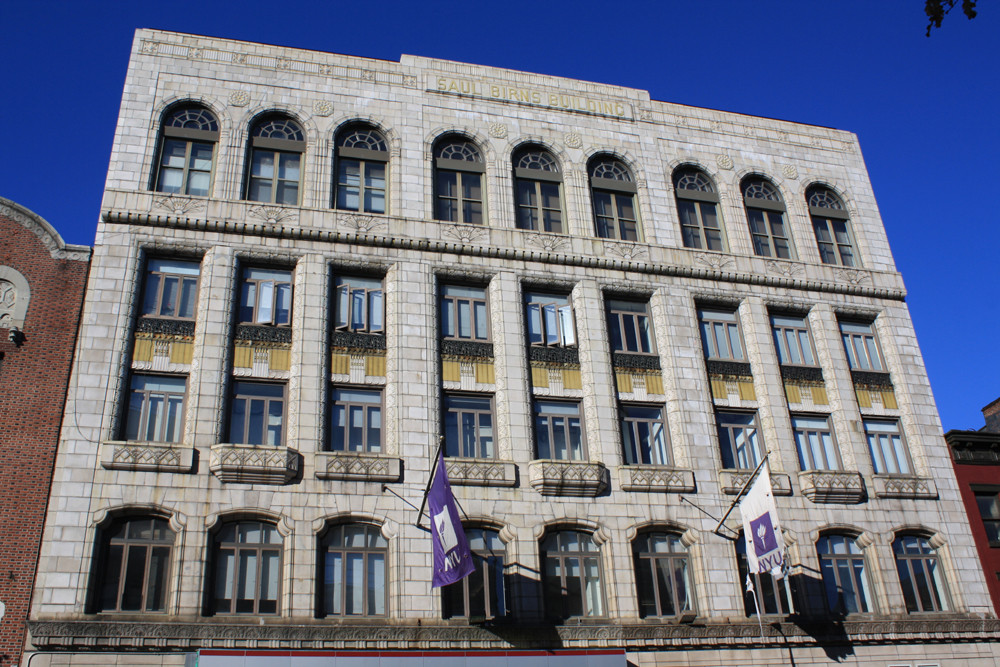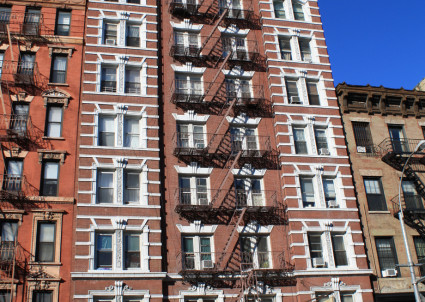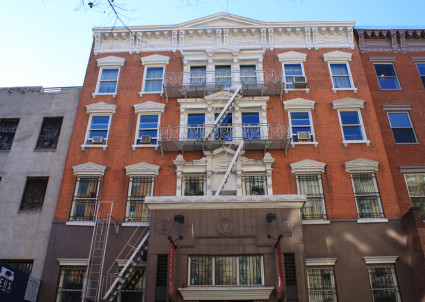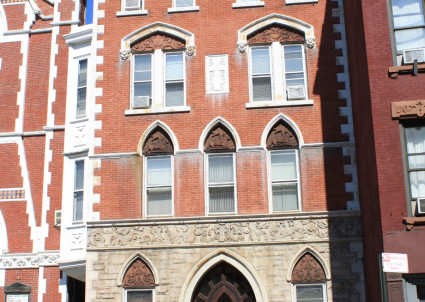Second Avenue between East 7th Street and East 2nd Street
107 Second Avenue, Ralph H. Segal, 1928
72 Second Avenue, Landsman & Smith, 1928-29
57 Second Avenue, George F. Pelham, 1903
43 Second Avenue, Frederick Ebeling, 1907
32 Second Avenue, Alfred Hopkins, 1917-19
66 Second Avenue, David M. Oltarsh and H. Craig Severance, 1926-27
66 East 4th Street c. 1832-33; altered: Kinkel & Klemt, 1871
By the early 20th century, as the Lower East Side grew, Second Avenue became a bustling thoroughfare, its rowhouse architecture either demolished or converted in favor of buildings hosting a mix of uses. Examples of its building types include: numbers 107 and 72, fanciful, terra-cotta-clad commercial buildings constructed in the late 1920’s; number 57, a nine-story New Law tenement that straddled the line between tenement and apartment building; number 43, the avenue’s first office building; and number 32, originally a City courthouse that was converted into the Anthology Film Archives in 1979. In the early 20th century, Second Avenue became known as the “Yiddish Rialto.” In addition to the Jaffe Theater, other significant sites include number 66, the Yiddish Public Theater that later served briefly as CBGB’s Second Avenue Theater, and 66 East 4th Street, the New York Turn Verein (German athletic and social club), where America’s first Yiddish-language theater performance is said to have taken place in 1882. Second Avenue between East 7th Street and East 2nd Street is located within the East Village/ Lower East Side Historic District.






